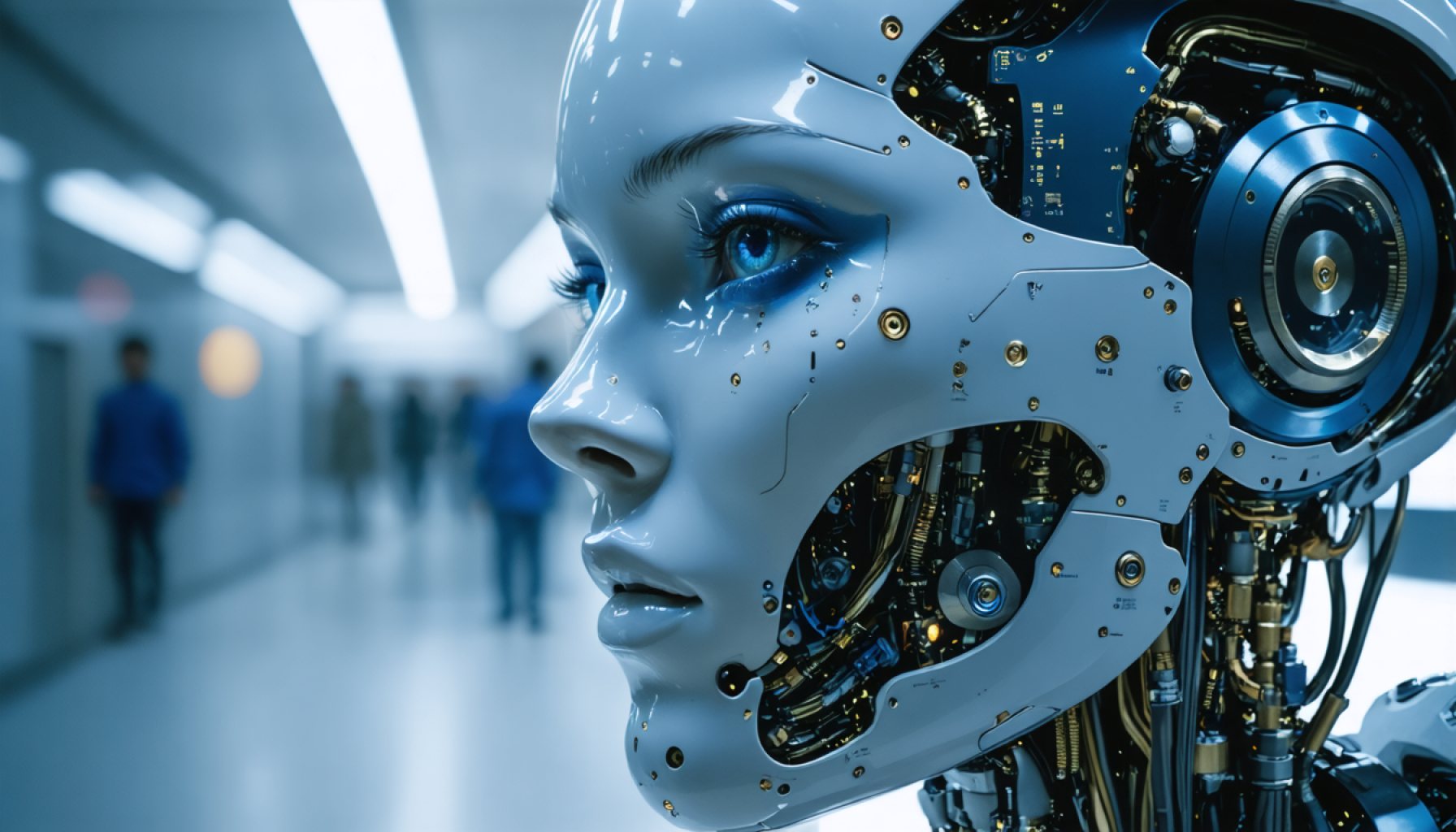- HUMAN-AI-T is an initiative bridging advanced AI and human ethics, driven by WISeKey, SEALSQ, the OISTE Foundation, and UNAOC.
- It aims to store humanity’s ethical values in a secure digital “moral vault” using post-quantum cryptography.
- The initiative is inspired by the Svalbard Global Seed Vault, emphasizing the safeguarding of human values in AI systems.
- HUMAN-AI-T promotes AI as a partner for global understanding, aligned with UNESCO’s “Many Cultures, One Humanity” principle.
- WISeKey’s expertise in IoT and quantum security bolsters the initiative’s reliability and ethical AI objectives.
- Rather than just addressing AI risks, HUMAN-AI-T enhances positive human attributes within AI, fostering peace and inclusivity.
- This effort envisions AI as a lighthouse for civilization, harmonizing technological progress with the human spirit.
Nestled in the serene yet progressive climes of Geneva, a seismic shift in artificial intelligence thinking is underway. Picture an idea as ambitious as storing humanity’s ethical values in an unassailable digital vault—a vision championed by WISeKey, SEALSQ, and the OISTE Foundation alongside the esteemed United Nations Alliance of Civilizations (UNAOC). They’re embarking on a bold mission known as HUMAN-AI-T, an initiative that seeks to thread the needle between cutting-edge AI and timeless human ethics.
HUMAN-AI-T dares to ask: As we rush headlong into a future dominated by Artificial General Intelligence (AGI) and quantum leaps in computing, how do we preserve what makes us inherently human? This initiative does not merely flirt with this philosophical inquiry; it aims to etch human compassion, multicultural dialogue, and ethical integrity into the digital substrate of tomorrow’s AI systems.
With roots stretching back to the first Global Dialogue on AI organized in 2022, a conclave which gathered luminaries like Dr. Rafael Yuste of the U.S. Brain Initiative, and Carlos Moreira, the architect behind WISeKey, this initiative was born from the recognition that technological progress without ethical anchoring is a ship lost in uncharted waters. The manifesto signed during this dialogue set a course for creating a sanctuary of human values in the age of AI.
The initiative draws inspiration from the Svalbard Global Seed Vault, that icy repository safeguarding Earth’s agricultural biodiversity. Similarly, HUMAN-AI-T envisions a “moral vault,” deeply encrypted with post-quantum cryptography, storing values derived from a rich tapestry of human experience—religious, philosophical, and indigenous wisdom included. This digital vault aims not merely to protect, but to project these values into the ever-evolving AI landscape, ensuring that technology grows hand-in-hand with human dignity and peace.
Imagine an artificial intelligence that listens to the diverse chorus of human civilizations, mediated by UNESCO’s principle of “Many Cultures, One Humanity.” This AI would serve not merely as a tool, but as a partner in promoting global understanding and shared values. Under HUMAN-AI-T, the potential for AI to operate beyond human oversight becomes less a threat and more an opportunity—to create systems that champion peace, inclusivity, and ethical transparency.
WISeKey and its affiliates have made great strides in IoT, quantum security, and blockchain integration. They’ve deployed over 1.6 billion microchips in various IoT sectors, underscoring a track record of trust and reliability. Now, they’re poised to translate this technological prowess into a measure of reassurance that our digital companions embody the best of human values.
What is gained from this initiative is not just the mitigation of existential risks posed by a superintelligent future. It rather amplifies humanity’s good. It offers us an AI reality that reflects our aspirations, challenges our complacency, and steers us clear of a digital dystopia unmoored from ethical considerations.
In essence, HUMAN-AI-T invites us to pause and consider: as machines grow smarter, will they also grow kinder? With this vision, artificial intelligence doesn’t just stand to be the next frontier of human innovation but a lighthouse guiding civilization through the challenges of the 21st century and beyond. The choice perhaps lies not in whether AI can be trusted, but in whether we can equip it with the legacy of humanity’s finest attributes. If humanity and technology can form a cohesive union, the possibilities are as boundless as the human spirit itself.
The Path to Ethical AI: Ensuring Humanity’s Values in the Digital Age
Understanding the HUMAN-AI-T Initiative
The HUMAN-AI-T initiative represents a groundbreaking effort to intertwine advanced technology with human ethics. Spearheaded by WISeKey, SEALSQ, and the OISTE Foundation, in collaboration with the United Nations Alliance of Civilizations (UNAOC), this initiative seeks to safeguard human values within the rapidly advancing realm of artificial intelligence.
Key Features and Vision
Ethical Repository: Drawing inspiration from the Svalbard Global Seed Vault, HUMAN-AI-T aims to establish a “moral vault.” This vault will utilize post-quantum cryptography to securely store ethical guidelines spanning various cultures, philosophies, and religions.
AI as a Cultural Mediator: The project envisions AI systems that can listen and adapt to diverse cultural and ethical viewpoints, leveraging UNESCO’s concept of “Many Cultures, One Humanity.” This ensures AI acts as a partner in promoting global understanding.
Technological Leadership: WISeKey, known for its expertise in IoT and quantum security, is leading the way in integrating these technologies into ethical AI systems. Their track record includes deploying over 1.6 billion microchips, demonstrating reliability and trust.
Real-World Applications
How-To Steps & Life Hacks: Organizations can learn from HUMAN-AI-T by incorporating ethical considerations into their AI development processes. Steps include forming diverse advisory panels, leveraging secure cryptographic methods, and fostering openness to global ethical inputs.
Market Forecasts & Industry Trends: According to Gartner, the AI ethics market is expected to grow significantly as industries recognize the importance of ethical frameworks. By 2025, companies that prioritize AI ethics will likely outperform competitors who ignore these considerations.
Challenges and Limitations
Controversies: One major challenge is achieving a consensus on ethical values across different cultures. There is also a risk that dominant cultures might overshadow minority perspectives.
Limitations: Ensuring that AI systems adhere to ethical guidelines in real-time scenarios remains technically difficult. The complexity of human ethics cannot be fully captured by algorithms alone.
Future Insights and Predictions
Security & Sustainability: Post-quantum cryptography is critical for securing future AI systems against emerging threats. The technology will need to evolve continually to meet security challenges.
Insights & Predictions: As companies increasingly integrate ethical AI practices, those who fail to adapt might face regulatory and reputational risks. The EU’s forthcoming AI regulation framework underscores this shift.
Actionable Tips
– Incorporate Diverse Perspectives: Include diverse cultural and ethical viewpoints in your AI development processes to create more inclusive systems.
– Invest in Advanced Cryptography: Utilize modern cryptographic methods such as post-quantum cryptography to safeguard ethical AI guidelines.
– Monitor Regulatory Changes: Stay informed about emerging regulations and standards, particularly in jurisdictions within the EU and North America.
Conclusion
HUMAN-AI-T is more than a technological endeavor; it’s a call to action for humanity to embed its finest values within the fabric of AI. As machines grow more capable, the challenge is to ensure they also grow more compassionate and understanding. The path to ethical AI is not just in developing smarter systems but kinder ones—a journey that is as much about what it means to be human as it is about what machines can become.
For further information on integrating ethical values into AI, consider visiting WISeKey.










